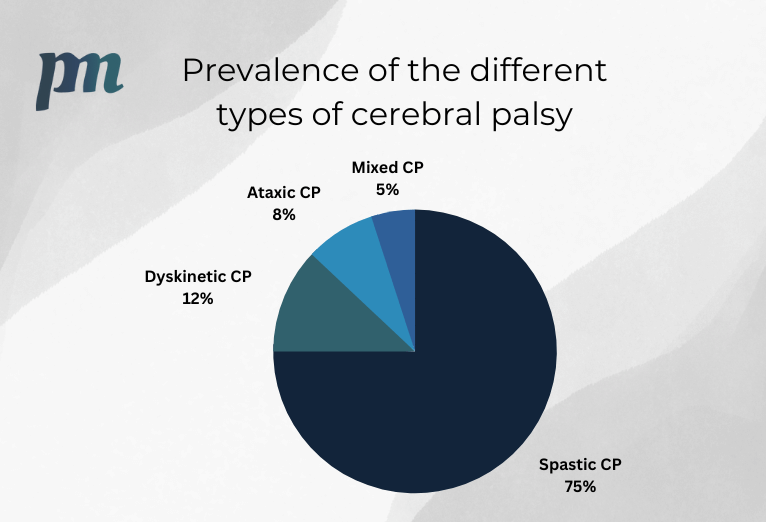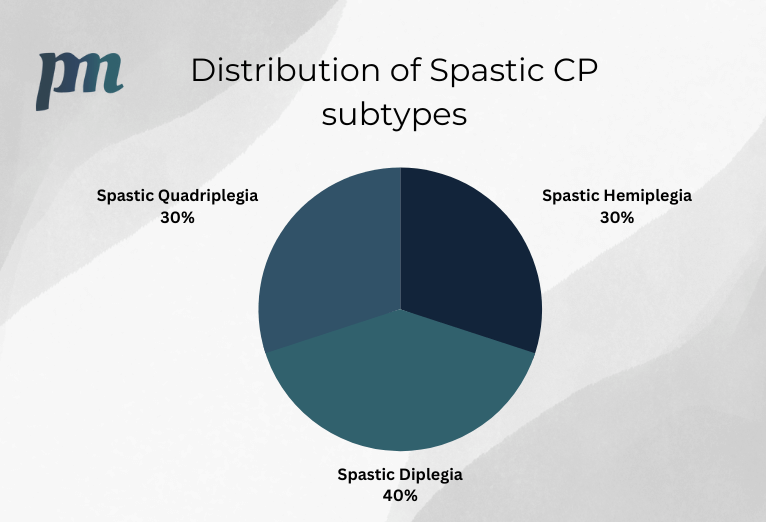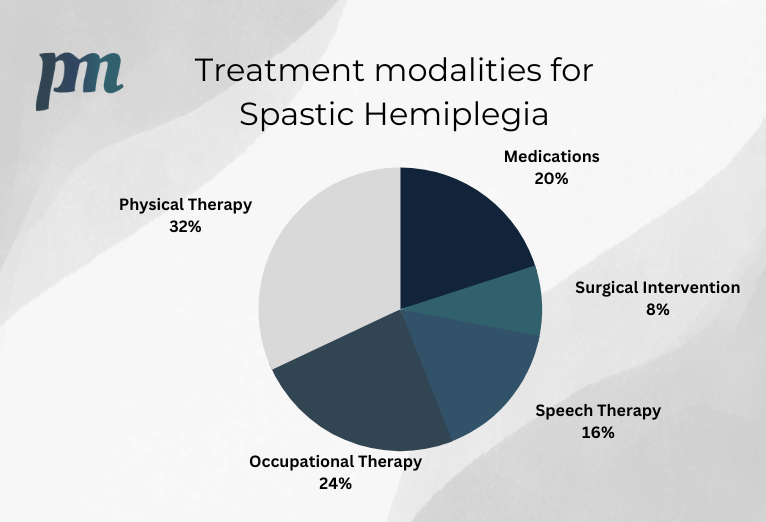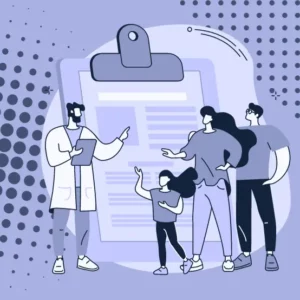Call: (800) 382-3176 or Chat with us
Spastic Hemiplegia: Causes, Treatment and Early Intervention, Medical Malpractice
Spastic hemiplegia is a life-altering condition that presents unique challenges to those affected and their families. By understanding the causes, symptoms, and treatment options, as well as the value of early intervention and support, families can help their loved ones lead more fulfilling lives. So, let’s dive into the world of spastic hemiplegia and explore how knowledge, support, and empowerment can make a difference.
Blog Summary
- Understanding spastic hemiplegia is essential for providing the correct support and resources.
- It has varying levels of severity compared to other forms of cerebral palsy, with early intervention and treatment minimizing impacts on daily life and development.
- Awareness of causes & risk factors as well as legal options can enable healthcare providers to offer best possible care & families affected by negligence may seek compensation.
Understanding Spastic Hemiplegia
Spastic hemiplegia is a form of cerebral palsy that affects one side of the body, resulting in:
- Muscle stiffness
- Difficulties in balance
- Gait
- Upper limb function
Comprehending the distinctions between spastic hemiplegia and other forms of cerebral palsy, along with its potential influence on daily life and development, is significant.
This knowledge equips families and caregivers to provide improved support to their loved ones, ensuring they access apt care and resources for their well-being.
Definition and Prevalence
Spastic hemiplegic cerebral palsy, a form of spastic cerebral palsy, is also known as hemiplegic cerebral palsy. It affects only one side of the body. Cerebral palsy is the most common type of motor disability. Approximately 80% of people living with cerebral palsy have this form of it, which is also referred to as spastic cp.
Although the severity of the condition can vary, it often results in high muscle tone, reduced range of motion, muscle weakness, and loss of functional skills in the affected arm on the affected side of the body.
Differences Between Spastic Hemiplegia and Other Forms of Cerebral Palsy
Spastic hemiplegia is distinct from other forms of cerebral palsy due to its unilateral impact and varying severity levels. In comparison to spastic diplegia, which mainly involves muscle rigidity in the legs, spastic hemiplegia predominantly affects one side of the body, including the arm, hand, and leg.
Spastic quadriplegia, on the other hand, affects all four limbs and is typically associated with more severe motor difficulties.
Impact on Daily Life and Development
Although spastic hemiplegia is not directly caused by a spinal cord injury, it can have a detrimental impact on a child’s mental and physical growth over time. However, with proper treatment and support, individuals with spastic hemiplegia can lead fulfilling lives.
Early intervention is crucial in helping children improve their fine motor skills and overall functioning.
Causes and Risk Factors
Brain injuries, dysfunction, premature birth, and medical malpractice can all contribute to the development of spastic hemiplegia. Being aware of the diverse causes and risk factors aids in delivering the optimal care and support for individuals impacted by this condition.
Brain Injuries and Dysfunction
The primary cause of spastic hemiplegia is damage to the motor cortex of the brain. This area is responsible for controlling voluntary movement on the side of the body affected by the condition. This damage disrupts the communication between the brain and muscles, leading to increased muscle tone and stiffness, known as spasticity, and impaired movement. Various brain injuries, such as brain damage in the womb or during birth, head injuries, brain tumors, or conditions like Sturge-Weber Syndrome, can lead to spastic hemiplegia.
Premature Birth
Research has indicated that there is a strong correlation between premature birth and spastic hemiplegia. Preterm infants are at an increased risk of developing the condition, especially those born before 37 weeks of gestation.
Premature birth can lead to impaired vascular autoregulation and cerebral ischemia, which may contribute to the development of spastic hemiplegia.
Medical Malpractice and Birth Injuries
Negligence during pregnancy or childbirth can result in a traumatic brain injury, leading to spastic hemiplegia. Examples of medical malpractice that can cause the condition include:
- Failure to adequately monitor and respond to fetal distress during labor
- Improper use of forceps or vacuum extraction during delivery
- Medication errors that result in brain damage
Symptoms and Diagnosis
Identifying early signs and comprehending the diagnostic procedures and severity levels of spastic hemiplegia is fundamental for offering suitable care and treatment for the condition.
Early Signs and Developmental Milestones
Early indications of spastic hemiplegia can include delayed achievement of motor milestones, pronounced reflexes, and muscle stiffness.
Prompt identification is critical for immediate intervention and treatment, which can assist in managing symptoms and averting additional complications.
Diagnostic Process and Tools
Diagnosis of spastic hemiplegia is typically conducted through a physical examination, medical history, and imaging tests, such as MRI and CT scans. The condition is usually diagnosed around four or five months of age, allowing for early intervention and treatment.
Severity Levels and Variations
The severity of spastic hemiplegia can range from mild to severe, and can differ between the two sides of the body. While some individuals may experience mild symptoms, others may face significant challenges in their daily lives.
Treatment Options for Spastic Hemiplegia
Even though there is no known cure for spastic hemiplegia, several treatment options exist to manage the condition and enhance the life quality of those affected. These include:
- Physical therapy
- Occupational therapy
- Medications
- Surgical procedures
Physical Therapy
Targeted exercises, assistive devices, and constraint induced movement therapy can improve motor control and mobility for individuals with spastic hemiplegia. Physical therapists provide guidance through exercises to ensure that the appropriate muscles are targeted and may recommend the use of assistive devices, such as walkers or crutches, to facilitate movement.
Occupational Therapy
Occupational therapy can assist individuals with spastic hemiplegia in attaining greater independence through the practice of activities of daily living, such as:
- Utilization of silverware
- Writing
- Dressing
- Brushing teeth
Occupational therapists may suggest the use of compensatory strategies, such as dressing the affected side first and undressing it last, to promote autonomy.
Medications
Medications such as baclofen and Botox can provide temporary relief from spasticity by inhibiting signals that cause muscle contractions. However, these medications don’t provide long-term cure. Individuals should take advantage of the decreased muscle rigidity to exercise their affected side as much as they can. This helps to bring adaptive modifications in the brain.
Surgery and Assistive Devices
Surgery can address limb deformities and muscle issues, while assistive devices provide support and stabilization. Surgical options may be recommended in cases of severe spasticity or to increase mobility, while assistive devices, such as walkers, wheelchairs, braces, and adaptive equipment, can help improve mobility, maintain balance, and allow for increased independence when completing daily tasks.
Early Intervention and Support Services
Prompt intervention is pivotal for maximizing the potential for progress and enhancing life quality for individuals with spastic hemiplegia.
Educational support and resources can further assist families in providing the best care for their loved ones.
Importance of Early Intervention
Early intervention for children with spastic hemiplegia has the potential to:
- Improve long-term functional outcomes
- Optimize hand and wrist posture
- Enhance mobility
- Improve overall quality of life
Addressing the motor and developmental challenges related to spastic hemiplegia, early intervention aids children in performing movements and fortifying synaptic connections, which might not be feasible without such intervention.
Individuals with Disabilities Education Act (IDEA)
The Individuals with Disabilities Education Act (IDEA) provides that children with spastic hemiplegia are entitled to a free appropriate public education (FAPE) that is tailored to their individual needs.
Additionally, IDEA includes provisions for early intervention services for children aged from birth to 36 months.
Support Organizations and Resources
Various organizations and resources are available to assist parents and caregivers of children with spastic hemiplegia, including the Cerebral Palsy Family Network, United Cerebral Palsy, and The Cerebral Palsy Support Network. These organizations offer a comprehensive network for families and an abundance of resources for additional education and support.
Living with Spastic Hemiplegia: Tips for Parents and Caregivers
Caring for a child with spastic hemiplegia can be challenging, but with the right support and resources, parents and caregivers can help their loved ones lead more independent and fulfilling lives.
Encouraging Independence
Promote independence by setting realistic goals and providing opportunities for self-care and decision-making.
Working closely with healthcare professionals and therapists, parents can help their child develop the skills and abilities necessary for greater autonomy.
Adapting the Home Environment
Make necessary modifications to the home to accommodate mobility and accessibility needs. This may include installing ramps and wider doorways, adding grab bars and rails in the bathroom, and providing adaptive equipment for daily tasks.
Building a Support Network
Connect with other families, support groups, and professionals to share experiences and resources. Building a strong support network can help parents and caregivers navigate the challenges of living with spastic hemiplegia and provide valuable guidance and encouragement.
Medical Malpractice and Spastic Hemiplegia
In certain instances, medical negligence during pregnancy or childbirth may lead to the onset of spastic hemiplegia.
Detecting medical negligence, considering legal options, and securing suitable legal representation can assist families in pursuing compensation and justice for their loved ones.
Identifying Medical Malpractice
Recognize instances of negligence during pregnancy or childbirth that may have contributed to spastic hemiplegia. If complications during pregnancy or childbirth are not properly identified and managed, brain injuries leading to spastic hemiplegia can occur.
Legal Options and Compensation
Pursue medical malpractice or personal injury lawsuits to seek compensation for damages related to spastic hemiplegia. Compensation may include:
- Medical expenses
- Lost wages
- Pain and suffering
- Various other damages
Finding the Right Legal Representation
Choose a knowledgeable and experienced attorney to represent your case and advocate for your child’s best interests. A skilled attorney can help ensure that the plaintiff obtains the deserved compensation and that the responsible party is held accountable for their actions.
Summary
Understanding spastic hemiplegia, its causes, and available treatments is essential for families and caregivers to provide the best care for their loved ones. Early intervention, educational support, and a strong support network can make a significant difference in the lives of those affected by this condition. By staying informed, seeking appropriate resources, and advocating for their child’s best interests, parents and caregivers can help their loved ones overcome the challenges of spastic hemiplegia and lead fulfilling lives.
Frequently Asked Questions
What are the symptoms of spastic hemiplegia?
Symptoms of spastic hemiplegia include muscle stiffness and weakness on one side of the body, difficulty performing tasks with the hands, trouble walking and balancing, holding one hand in a fist, developmental milestone delays, and favoring one hand over the other.
What is spastic hemiplegia of the leg?
Spastic hemiplegia of the leg is a form of cerebral palsy where one side of the body is affected by muscle stiffness and contraction, making movement awkward or impossible.
What is the difference between spastic quadriplegia and spastic hemiplegia?
Spastic hemiplegia affects one side of the body, usually more so in the arm than the leg. It is typically caused by prenatal brain bleeding. On the other hand, spastic quadriplegia affects all four limbs, the trunk, and the face, making it the most severe form of spastic CP.
What is left hemiplegia with spasticity?
Left hemiplegia with spasticity is a condition caused by an injury to the left side of the brain which results in limited mobility on the right side of the body.
What is a hemiplegic cerebral palsy?
Hemiplegic cerebral palsy is a form of cerebral palsy caused by damage to the hemisphere of the brain that controls muscle movements, resulting in paralysis on one vertical half of the body.











